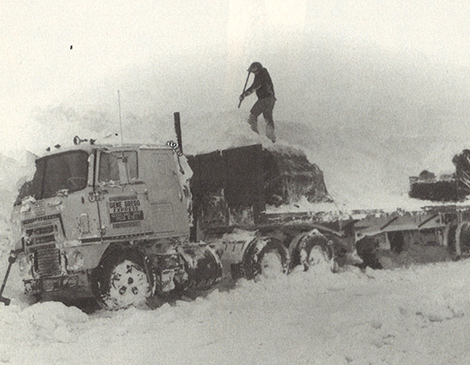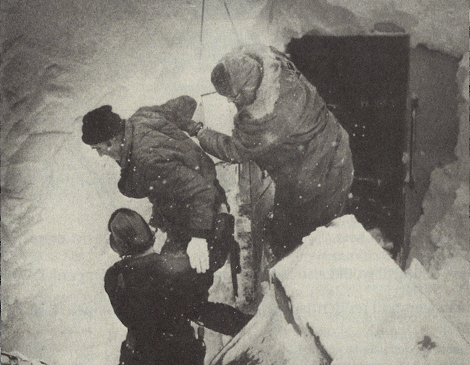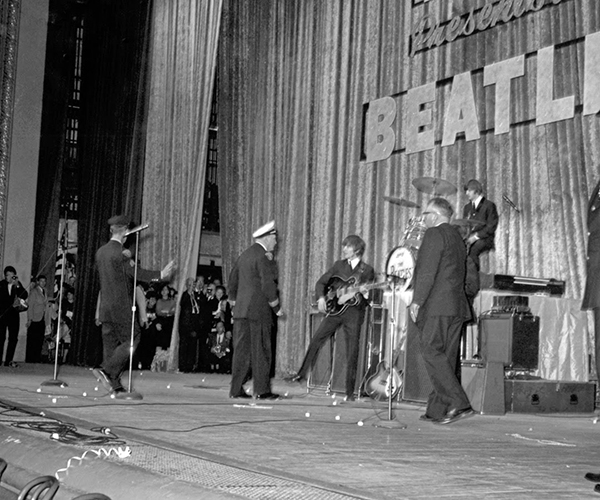Tears glistened behind his glasses as Gov. James A. Rhodes spoke to the thousands of Ohioans stuck at home — or, worse, stranded — froze and in the dark, terrorized by the elements.
“They’re helpless, they’re victims,” he choked. “They want mercy and we can’t get to them.”
Rhodes called it a “killer blizzard.” The Plain Dealer called it the “snow of the century.” Lorain’s daily newspaper, The Journal, called it “the blizzard that stopped Ohio.”
Many Ohioans didn’t realize anything was wrong until their electric alarm clocks failed to awake them on the morning of Jan. 26, 1978. It didn’t matter; most of them wouldn’t go anywhere anyway. The blizzard had virtually immobilized the state and ultimately was blamed for 21 deaths.
Six inches of snow has dumped on Greater Cleveland within 12 hours. Whipped by wind gusts exceeding 80 miles per hour, the snow created drifts that made roads impassable. Cars were abandoned throughout the area. For the first time in its 20-year history, the Ohio Turnpike was closed from one end to the other.
The wind chill at Cleveland Hopkins International Airport registered as low as 100 degrees below zero. Power was cut off to some 175,000 homes throughout the state. In Cuyahoga County alone, nearly 1,000 people crowded into the emergency shelters. The city of Cleveland opened its fire stations and recreation centers to those who sought refuge.
There has been little warning.
On the morning of the storm, the lead story in The Plain Dealer concerned the call Mayor Dennis Kucinich and his then wife, Sandy, had made on President Jimmy Carter the day before. The story reported that, on his first visit to the Oval Office, the mayor had asked the president to finance a $1.5 million sewer construction project for Cleveland.
Tucked neatly under the Kucinich story, the morning paper carried a modest report on the possibility of a winter storm. The forecast called for up to 3 inches of snow. When more than twice the predicted snowfall hit, the mayor was forced to remain in Washington — Hopkins was closed — and his staff of mavericks was left to cope with the crisis at home.
“The blizzard was the enemy and the enemy was at the gate,” wrote Joe Wagner, the PD’s feared and admired City Hall reporter who now covers politics for the Lorain newspaper. “There was a sense of urgency as Cleveland’s acting mayor, Joseph G. Tegreene, the 24-year-old political boy wonder, gathered his lieutenants to map battle plans. There was also a sense of pride.”
PD editorials wrote with equally dramatic flair in describing the storm’s brutality:
“The hurricane-force wind ripped roofs apart, tore breath from the throats of pedestrians, knocked down power lines, uprooted trees, paralyzed commerce. A steel railroad bridge on Whiskey Island was twisted askew. Swirling snow reduced visibility sometimes to a matter of several feet, creating virtual whiteouts. Driven before the wind, snow stung the face as smartly as blowing sand. Tears flowed. Eyelashes froze.”

Only the heartiest of souls — including 2,000 National Guardsmen called up by Rhodes — willingly ventured out. Others simply got caught. Among the latter unfortunates was Jim Truly, a 43-year-old Cleveland truck driver who for the remainder of his life — he died in 1986 — would recall the date as “the day I got buried.”
Truly was buried alive for six days inside the cab of his 40-foot tractor-trailer rig, covered by drifting snow that shut Ohio Route 13 north of Mansfield, 70 miles southwest of Cleveland. Trapped without food or heat for 124 hours, he ate snow, smoked cigarettes and prayed.
A year later, when he told his story to a young reporter, Truly spoke calmly and matter-of-factly — the same way he had approached his ordeal in the snow. “I never gave up,” he said.
He explained how he fell asleep in his cab awoke in darkness. Calls for help over his CB radio went unanswered. Still, his CB — or, more precisely, his CB antenna — would prove to be the catalyst of his rescue.
“I woke up, seen I couldn’t get out, and I figured, Well, the snow plow will be along,” Truly told the reporter. “When it didn’t come, I figured, Well, somebody will come. I knew I could count on my brother. He’d come looking for me.”
He was right.
While the crisis has passed for most Ohioans in the days following the blizzard, Don — who now is retired and lives in Strongsville — was desperately searching for his missing brother.
“I knew where he was going, but I didn’t know what route he was taking,” he said recently. So he and other family members started tracing various paths Jim might have followed. One area, Don recalled, was “suspicious.”
“The wind blew so much that there was 20 feet of snow in the road,” he said. “So we went back the next day, and some of the snow had blown off. We spotted a shiny antenna poking up about an inch out of the snow. We walked across there, and felt something [under our] feet. I said ‘He’s alive. He’s in the truck yet.’”
Borrowing a shovel from someone nearby, he started digging. “We dug down to the window and Jim rolled it down.” Don peered in. “The truck looked like the inside of a freezer,” he said. Yet his brother was able to walk out on his own.
Jim Truly went back to work as a trucker, and Dennis Kucinich came home — just in time to read the first in the series of articles the PD began on the nagging problems of the Municipal Light Plant, the start of the blizzard that would bury Kucinich himself.
Life returned to normal. Or at least as normal as it got in Cleveland during the late ’70s.
This story was originally published in the December 1997 edition of Cleveland Magazine.




